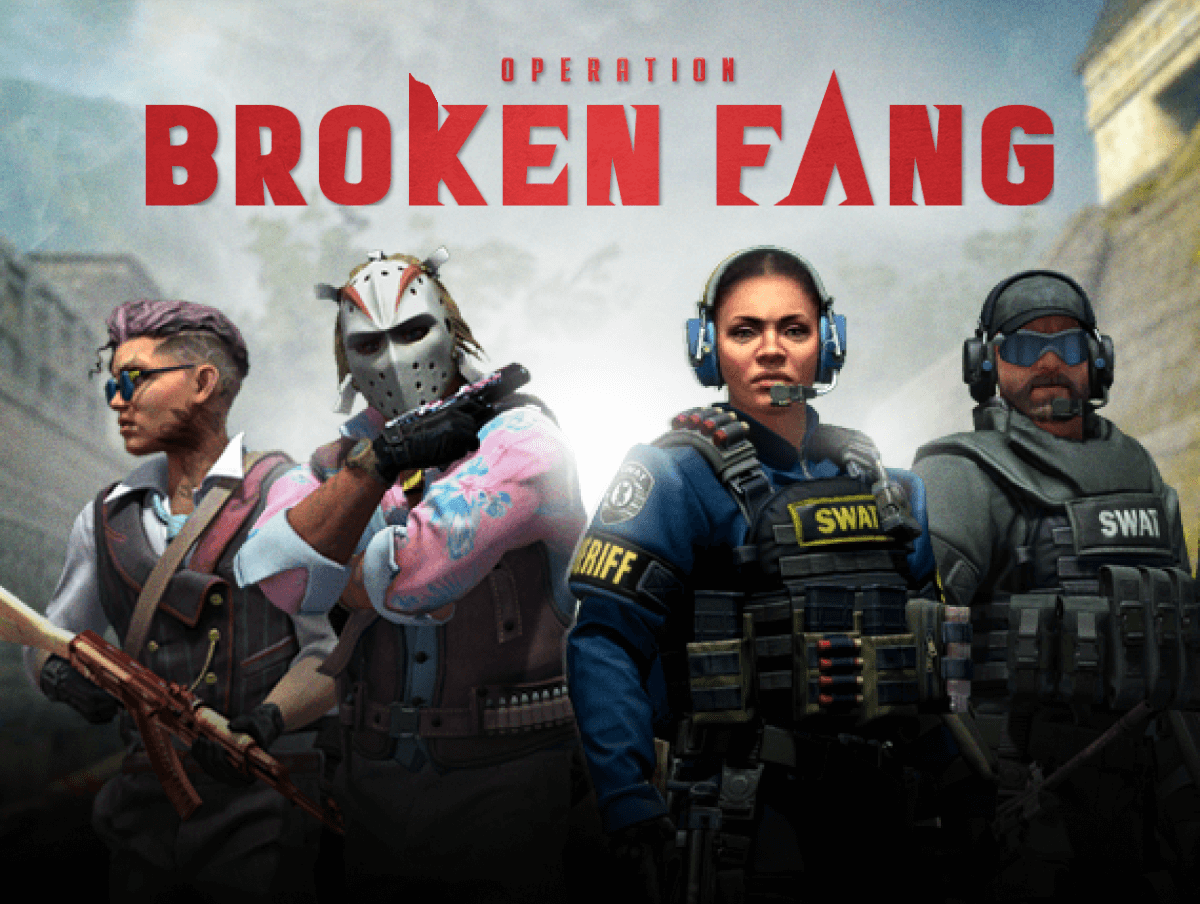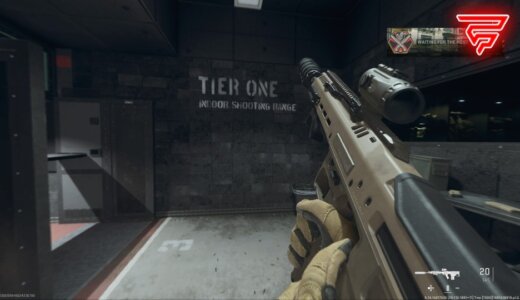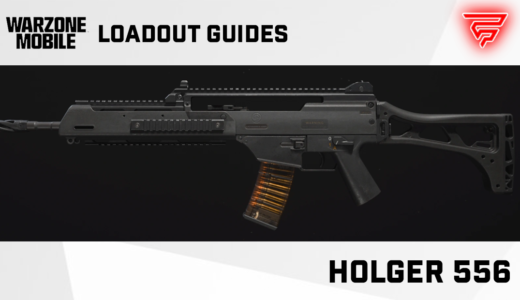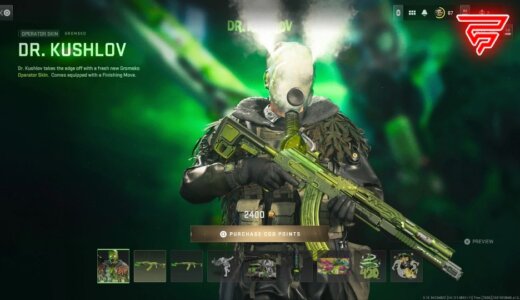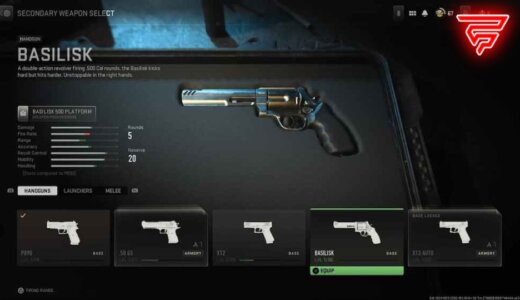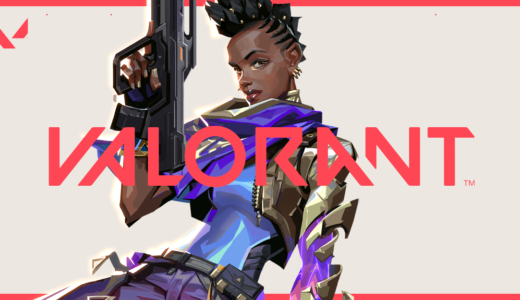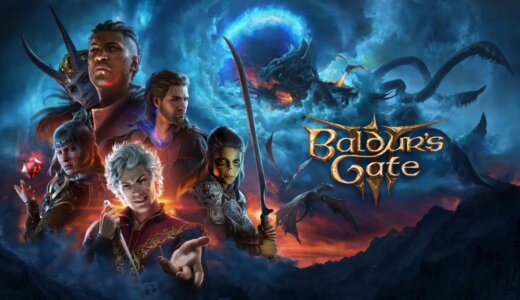Counter-Strike: Global Offensive (CSGO) is a popular first-person shooter game that has been around for years. One of the reasons for its continued success is the introduction of “Operations.” Operations are DLC (downloadable content) packs that contain community-created content, including community maps, new game modes, and skins. The developers of CSGO, Valve, also add their own content to the operations, including Co-Op Strike and Guardian missions.
Operations were first introduced in 2013 with “Operation Payback,” and since then, there have been ten more operations. Each operation update brings new maps, modes, and skins to the game, helping to keep it popular and exciting for players. Operations are purchasable DLCs, and players can buy an operation coin to track their progress and earn rewards throughout the duration of the operation.
Later operations also introduced exclusive weapon collections and cases, which players can purchase to get new skins for their weapons. Operations have become a staple in CSGO, and players eagerly anticipate the release of new operations. In this article, we will take a closer look at operations in CSGO, how they work, and what players can expect from them.
Game Basics
Counter-Strike: Global Offensive (CS) is a first-person shooter game that was released in 2012. It is the fourth game in the Counter-Strike series and has become one of the most popular multiplayer games in the world.
Game Modes
CS offers several game modes to choose from, including:
- Competitive: A 5v5 mode where players compete in a best-of-30 match. The goal is to win 16 rounds before the other team.
- Casual: A more relaxed version of Competitive mode with shorter match times and no friendly fire.
- Deathmatch: A mode where players respawn after being killed and the goal is to get as many kills as possible within a certain time limit.
- Arms Race: A mode where players start with weak weapons and progress to stronger ones by getting kills.
- Demolition: A mode where players take turns attacking and defending a bomb site. The attacking team must plant the bomb and defend it until it explodes, while the defending team must prevent the bomb from being planted or defuse it if it has been planted.
Gameplay Mechanics
In CS, players take on the role of either terrorists or counter-terrorists and must complete objectives specific to their team. The game has a variety of weapons and equipment, including pistols, rifles, grenades, and more.
Players can earn money by completing objectives, killing enemies, and winning rounds. This money can be used to purchase weapons and equipment for the next round.
CS also has a ranking system that determines a player’s skill level. Players earn experience points by playing matches and can rank up by earning enough experience points.
Overall, CS is a fast-paced and challenging game that requires strategy, teamwork, and skill.
Maps Overview
CS Operations introduce new maps to the game, both official and community-made. These maps are usually available only during the duration of the operation and can be played in various game modes. In this section, we will provide an overview of the maps introduced in different operations.
Official Maps
Official maps are created by Valve and are designed to be played in competitive and casual game modes. These maps are usually included in the Active Duty Map Pool and are played in professional matches. The following are some of the official maps introduced in different operations:
- Operation Payback Maps: Museum, Downtown, Thunder, Favela, Italy, and Lake.
- Operation Bravo Maps: Agency, Seaside, Cache, Ali, and Chinatown.
- Operation Phoenix Maps: Cache, Motel, Seaside, Downtown, Thunder, and Ali.
- Operation Breakout Maps: Black Gold, Castle, Insertion, Mist, Overgrown, and Rush.
- Operation Vanguard Maps: Cobblestone, Overpass, Cache, and Train.
- Operation Bloodhound Maps: Zoo, Coast, Empire, Resort, and Mikla.
- Operation Wildfire Maps: Abbey, Biome, Coast, Empire, Mikla, Royal, Santorini, and Tulip.
- Operation Hydra Maps: Agency, Austria, Blacksite, Insertion, Shipped, Thrill, and Lite.
- Operation Shattered Web Maps: Lunacy, Jungle, Studio, Breach, Workout, and Ruby.
Community Maps
Community maps are created by players and are selected by Valve to be included in the operation. These maps are usually available in different game modes and offer a unique experience. The following are some of the community maps introduced in different operations:
- Operation Payback Maps: Museum, Downtown, Thunder, Favela, Italy, and Lake.
- Operation Bravo Maps: Agency, Seaside, Cache, Ali, and Chinatown.
- Operation Phoenix Maps: Cache, Motel, Seaside, Downtown, Thunder, and Ali.
- Operation Breakout Maps: Black Gold, Castle, Insertion, Mist, Overgrown, and Rush.
- Operation Vanguard Maps: Cobblestone, Overpass, Cache, and Train.
- Operation Bloodhound Maps: Zoo, Coast, Empire, Resort, and Mikla.
- Operation Wildfire Maps: Abbey, Biome, Coast, Empire, Mikla, Royal, Santorini, and Tulip.
- Operation Hydra Maps: Agency, Austria, Blacksite, Insertion, Shipped, Thrill, and Lite.
- Operation Shattered Web Maps: Lunacy, Jungle, Studio, Breach, Workout, and Ruby.
Overall, the introduction of new maps in CS Operations offers players a chance to experience unique gameplay and explore different strategies. Whether playing official or community maps, players can enjoy the game in a fresh and exciting way.
Weapons Guide
Primary Weapons
In CS, primary weapons are the backbone of any player’s arsenal. These weapons are generally more powerful and accurate than their secondary counterparts, but they also come with a higher price tag. Here are some of the most commonly used primary weapons in the game:
- AK-47: This is one of the most popular primary weapons in the game. It is a powerful rifle that can take down enemies with just a few shots. It is also relatively inexpensive, making it a great choice for players on a budget.
- M4A4/M4A1-S: These are the standard rifles used by the Counter-Terrorist team. They are accurate and powerful, making them great for both short and long-range engagements.
- AWP: This is a sniper rifle that can take down enemies with just one shot. It is a highly specialized weapon that requires a lot of skill to use effectively.
Secondary Weapons
Secondary weapons are generally less powerful than primary weapons, but they are also less expensive. They are often used as backup weapons when a player runs out of ammo or needs to switch to a weapon that is better suited for close-range combat. Here are some of the most commonly used secondary weapons in the game:
- Glock-18: This is the standard pistol used by the Terrorist team. It is relatively weak, but it has a high rate of fire and is very accurate at close range.
- P2000/USP-S: These are the standard pistols used by the Counter-Terrorist team. They are more powerful than the Glock-18, but they also have a slower rate of fire.
- Desert Eagle: This is a powerful pistol that can take down enemies with just a few shots. It is a highly specialized weapon that requires a lot of skill to use effectively.
Overall, it is important for players to experiment with different weapons to find the ones that work best for their playstyle. Choosing the right weapons can mean the difference between victory and defeat in CS.
Economy System
Counter-Strike: Global Offensive has a complex economy system that can be difficult to understand for new players. The economy system determines how much money a player has, what weapons they can buy, and when they can buy them. In this section, we will explore the two main aspects of the economy system: Money Management and Weapon Purchasing.
Money Management
In CS, players start with $800 in their bank account. They can earn more money by winning rounds, killing enemies, and completing objectives. Losing rounds, on the other hand, will result in a decrease in the player’s bank account. The amount of money earned or lost depends on the round and the player’s performance.
It is important for players to manage their money wisely. They need to balance their spending on weapons, equipment, and utility with their bank account balance. If a player spends too much money early on, they may not have enough money to buy better weapons later in the game. If a player saves too much money, they may not have enough firepower to win important rounds.
Weapon Purchasing
There are a variety of weapons that players can purchase in CS. Each weapon has its own price, damage, and accuracy rating. Players need to choose their weapons carefully based on their playstyle and the situation.
The most common weapons in CS are rifles, pistols, and SMGs. Rifles are powerful but expensive, while pistols and SMGs are cheaper but less effective at long range. Players can also purchase grenades, armor, and defuse kits to help them in combat.
Players need to be strategic when purchasing weapons. They need to consider their budget, their team’s composition, and the opponents they are facing. It is important to have a balance of weapons on the team to cover different situations and playstyles.
Overall, the economy system in CS is a crucial aspect of the game that players need to master in order to succeed. By managing their money effectively and purchasing the right weapons, players can gain an advantage over their opponents and win more rounds.
Tactics and Strategy
Teamwork
In CS, teamwork is essential for success. Players need to communicate effectively and work together to achieve their objectives. This includes coordinating their movements, sharing information about enemy positions, and setting up crossfires to take down opponents.
One effective way to improve teamwork is by practicing together as a team. This can involve running drills that focus on specific aspects of teamwork, such as communication or crossfires. It can also involve analyzing gameplay footage to identify areas where the team can improve their coordination and communication.
Positioning
Positioning is another important aspect of CS strategy. Players need to position themselves effectively to take advantage of cover and angles, while also avoiding being exposed to enemy fire.
One effective way to improve positioning is by studying the maps and learning the best spots to hold or attack from. This can involve analyzing gameplay footage, studying maps in detail, and practicing specific positions in custom games. It can also involve experimenting with different positions and angles to find what works best for each player.
Map Control
Map control is the third key aspect of CS strategy. Players need to control key areas of the map to deny the enemy access and gain an advantage. This can involve setting up crossfires, controlling chokepoints, and taking control of key areas of the map.
One effective way to improve map control is by studying the maps and learning the best ways to control key areas. This can involve analyzing gameplay footage, studying maps in detail, and practicing specific strategies in custom games. It can also involve experimenting with different approaches to map control to find what works best for each team.
Overall, effective tactics and strategy in CS require teamwork, positioning, and map control. By focusing on these key areas, players can improve their chances of success and achieve their objectives.
Professional Scene
Counter-Strike: Global Offensive has a thriving professional scene that features some of the best players and teams in the world. The professional scene is highly competitive, with players and teams constantly striving to improve their skills and strategies.
Major Tournaments
The biggest events in the CS professional scene are the Valve-sponsored Major tournaments. These tournaments are held twice a year and feature the best teams from around the world competing for a prize pool of over $1 million. Major tournaments are highly prestigious and are considered the pinnacle of competitive play in CS.
Aside from the Majors, there are also several other top-tier tournaments that attract the best teams in the world. These tournaments are typically organized by third-party organizers such as ESL and BLAST, and feature large prize pools and high levels of competition.
Top Teams
The CS professional scene is dominated by a handful of top teams that consistently perform well in tournaments. These teams have some of the best players in the world and are known for their exceptional teamwork and strategic play.
Some of the top teams in the CS professional scene include Astralis, Natus Vincere, and Team Liquid. These teams have won multiple Major tournaments and are consistently ranked among the best in the world.
Overall, the CS professional scene is a highly competitive and exciting environment that attracts top talent from around the world. With its combination of skill, strategy, and teamwork, it is no wonder that CS has become one of the most popular esports in the world.
Community Involvement
Counter-Strike: Global Offensive operations are not only about new maps, skins, and weapons. They are also about community involvement. The community plays a significant role in the development of operations, and Valve encourages players to participate in the process.
Workshop Content
One of the ways that the community gets involved in operation development is through the Steam Workshop. The Steam Workshop is a platform where players can submit their maps, skins, and other custom content. Valve reviews the submissions and selects the best ones to be included in the next operation.
The inclusion of community-made content in operations is beneficial to both Valve and the community. Valve gets to showcase the creativity of its players, while the community gets the recognition it deserves. Additionally, the inclusion of community-made content helps to keep the game fresh and exciting.
Fanbase
The Counter-Strike: Global Offensive fanbase is one of the most passionate and dedicated in the gaming industry. Valve recognizes this and has made efforts to involve the community in the development of operations. For example, Valve has created a system where players can vote for their favorite maps on the Steam Workshop. The maps with the most votes have a higher chance of being included in the next operation.
The involvement of the fanbase in the development of operations has helped to create a sense of ownership and pride in the community. Players feel that they are contributing to the game’s development and are invested in its success. This investment has helped to create a strong and loyal fanbase for Counter-Strike: Global Offensive.
In conclusion, community involvement is a crucial aspect of Counter-Strike: Global Offensive operations. By including community-made content and involving the fanbase in the development process, Valve has created a game that is not only fun to play but also engaging and exciting to be a part of.
Future of Operations
Updates
As of November 2023, Valve has not officially announced any upcoming CS operations. However, based on the release pattern of previous operations, it is likely that a new operation will be released in the future. The most recent operation, Operation Riptide, was released in November 2021. Before that, there was a gap of over two years between the release of Operation Shattered Web in November 2019 and Operation Hydra in May 2017.
Predictions
There is no way to know for sure when the next operation will be released or what it will include, but there are some predictions that can be made based on past operations and community feedback. Many players have expressed a desire for more cooperative missions and new maps. It is also possible that Valve will introduce new game modes or weapons skins.
It is worth noting that Valve has not always followed a strict release schedule for operations, and there have been significant gaps between releases in the past. Additionally, Valve has not provided any official information regarding the future of operations in CS. Therefore, any predictions or expectations should be taken with a grain of salt.
Overall, while it is likely that Valve will release a new operation in the future, the exact timing and content of the operation are unknown. Players will have to wait for official announcements from Valve for more information.
Frequently Asked Questions
When is the next CSGO operation?
Valve, the developer of CSGO, has not announced the release date for the next operation. However, operations typically last between 2-3 months, so players can expect a new operation to be released within that timeframe.
What is CSGO Operation Riptide?
Operation Riptide is the latest CSGO operation that was released on September 14, 2021. It introduced new maps, missions, and weapon collections. Operation Riptide also brought back the classic map “Seaside” and introduced a new map called “Mocha.”
What are Operation missions in CSGO?
Operation missions are challenges that players can complete to earn rewards such as weapon skins, cases, and other in-game items. These missions are available exclusively to players who have purchased an operation pass.
What are the dates of previous CSGO operations?
Here are the release dates of the previous CSGO operations:
- Operation Broken Fang: December 3, 2020 – April 30, 2021
- Operation Shattered Web: November 18, 2019 – March 30, 2020
- Operation Hydra: May 23, 2017 – November 13, 2017
How long do CSGO operations last?
CSGO operations typically last between 2-3 months. However, the duration of an operation can vary depending on the content included in the operation.
How much does a CSGO operation pass cost?
The cost of a CSGO operation pass varies depending on the operation. Operation passes typically cost around $15 USD. However, players can also purchase a bundle that includes the operation pass and additional in-game items for a higher price.
